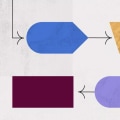Cause and effect diagrams are an important tool for process improvement and total quality management. They are used to identify relationships between different variables and help organizations analyze and improve their processes. By understanding the relationships between causes and effects, organizations can make more informed decisions, which can lead to more efficient processes and better quality outcomes. This article will discuss the importance of cause and effect diagrams in process improvement strategies and total quality management. It will provide an overview of what these diagrams are and how they can be used to identify problems and opportunities for improvement.
Finally, it will discuss how organizations can use cause and effect diagrams to improve their processes and achieve better quality outcomes.
What Are Cause and Effect Diagrams?
Cause and effect diagrams, also known as fishbone diagrams or Ishikawa diagrams, are tools used to analyze the causes of a problem so that it can be addressed effectively. They are used in both process improvement strategies and total quality management (TQM) initiatives. Cause and effect diagrams are visual tools that help identify potential causes of a problem, and then analyze them to determine which ones have the greatest impact. The diagram is made up of a “head” with the problem statement, and “bones” that represent potential causes.The diagram helps to identify the root cause of the problem, which can then be addressed in order to improve the process or product. Cause and effect diagrams can be used in a variety of ways. In process improvement strategies, they can be used to identify areas for improvement, as well as to analyze problems and develop solutions. In TQM initiatives, they can help identify potential causes of poor product quality or customer service issues, which can then be addressed accordingly.
Creating a cause and effect diagram is relatively straightforward. Begin by writing the problem statement at the head of the diagram. Then, brainstorm potential causes and list them along the bones of the diagram. Once all potential causes have been identified, analyze each one to determine which ones have the greatest impact on the problem.
Cause and effect diagrams are an effective tool for both process improvement strategies and TQM initiatives. By helping to identify the root cause of a problem, they can be used to develop effective solutions that will improve processes or products.
Using Cause and Effect Diagrams
Cause and effect diagrams are an invaluable tool for analyzing potential causes of a problem or effect, as well as for developing solutions. By visually mapping out the relationships between different factors, cause and effect diagrams can help to identify the root cause of an issue and suggest ways of addressing it.Cause and effect diagrams are also known as Ishikawa diagrams, after the Japanese quality management expert Kaoru Ishikawa who first developed the concept. They can be used in Total Quality Management (TQM) and process improvement strategies, to identify what is causing a problem and create solutions. To create a cause and effect diagram, begin by identifying the problem or effect in question. For example, if you are looking to reduce customer complaints, you would start with the statement “customer complaints.” From there, draw a circle around it and list potential causes of the issue. These could include things like poor customer service, long wait times, or faulty products.
Next, draw arrows from each of these causes to the central circle. To further narrow down the possible causes, add more circles around each cause and list potential sub-causes. This process can be repeated until all possible causes have been identified. Once you have created your cause and effect diagram, it can be used to analyze potential solutions to the problem.
For example, if you identified long wait times as a cause of customer complaints, you could look at ways of reducing wait times such as automating processes or hiring more staff. In summary, cause and effect diagrams are a useful tool for identifying the root cause of a problem and creating solutions. By visually mapping out potential causes and solutions, they can help TQM teams and process improvement strategists develop effective solutions to problems. Cause and effect diagrams are a valuable tool for both process improvement strategies and total quality management initiatives. By understanding how to create and use cause and effect diagrams, organizations can ensure that their efforts are focused on the right areas to address and solve problems in an effective manner.
Through the use of cause and effect diagrams, organizations can gain insight into the root causes of problems, enabling them to take the necessary steps to eliminate or reduce the issue.


